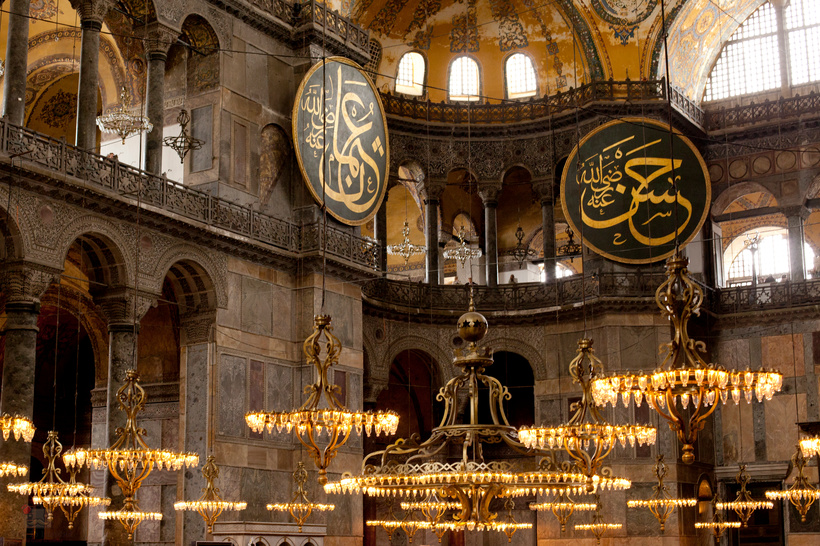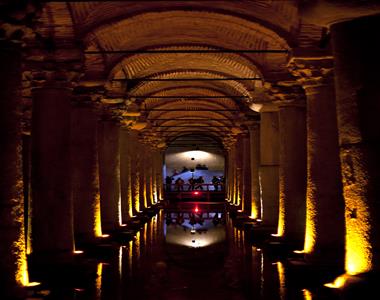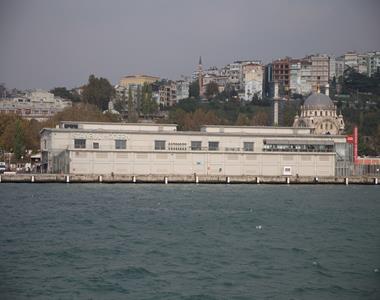Hagia Sophia
A Building of Breathtaking Beauty – The Hagia Sophia
One of the world’s greatest structures is the Hagia Sophia in Istanbul, also known in its native tongue as Ayasofya and in Latin as Sancta Sophia (Church of the Holy Wisdom or Church of the Divine Wisdom). During the reign of Byzantine Emperor Justinian I (527–565), a Christian church was constructed there. Over the years that followed, it served as a mosque, a museum, and finally, back to its original purpose, a mosque. The architecture has both Islamic features (such as minarets and inscriptions) and Christian embellishments (such as mosaics) to show the evolution of religion in the region.
The History of The Hagia Sophia
According to legend, Constantine I ordered the construction of the Hagia Sophia Church on the site of an earlier pagan temple in 325. Constantius II, his son, blessed it in the year 360. In 404, it was burned down during riots over the exile of St. John Chrysostom, the patriarch of Constantinople at the time. Constans I, the Roman emperor, oversaw its expansion and reconstruction. In 415, Emperor Theodosius II rededicated the building after extensive renovations. After the church was destroyed once more during the Nika uprising in January 532, Justinian I was able to begin planning a magnificent new structure to replace it.
Hagia Sophia, the resulting structure, was completed in 537 CE, a mere six years after construction began. Not only are the names of the architects, Anthemius of Tralles and Isidorus of Miletus, well-known, but so, too, is their knowledge of mechanics and mathematics, which is unusual for the time period in which the building was constructed. Although the dome partially collapsed in 558 (repaired in 562) and twice again in the following centuries, it was rebuilt to a lower scale and the entire church was strengthened from the outside, the current construction is virtually the one that stood in the 6th century. In the middle of the 14th century, it underwent another restoration. It served as the Ecumenical Patriarchate of Constantinople’s Cathedral for over a thousand years. In 1204, during the Fourth Crusade, Venetians and Crusaders pillaged the city.
Mehmed II, who led the Turkish army that conquered Constantinople in 1453, had the building converted into a mosque by installing a wooden minaret (an exterior tower used for the call to prayer), a massive chandelier, a mihrab (a niche indicating the direction of Mecca), and a minbar (a raised platform used for religious discourse) (pulpit). The red minaret on the southeast corner of the building is attributed to either him or his son Bayezid II. The wooden minaret that stood there before was destroyed. This mosque’s skinny white minaret can be found on the northeast corner, where it was added by Bayezid II. The two matching minarets on the western side were constructed by the famous Ottoman architect Sinan in the 1500s and were likely commissioned by Selim II or Murad III.
Having been secularized by Turkish President Kemal Atatürk in 1934, the structure was transformed into a museum the following year. In 1985, UNESCO added the Hagia Sophia and other significant historic structures and locations in Istanbul to a site named the Historic Areas of Istanbul. Recep Tayyip Erdoan, president of Turkey, made the contentious decision in 2020 to return the structure to its original use as a mosque. Islamic prayers were held in the building shortly after the announcement, with drapes drawn to partially obscure the Christian imagery inside. The Hagia Sophia remained available to the public as Turkey’s number one tourist attraction.

Architecture
The Hagia Sophia is a unique hybrid of a longitudinal basilica and a centered building, with a massive main dome measuring 32 meters (105 feet) in diameter and supported on pendentives, as well as two smaller semidomes on either side of the longitudinal axis. Although Justinian’s domed basilicas constitute the inspiration for Byzantine architecture, the Hagia Sophia remained unique and was never attempted to be replicated by subsequent Byzantine architects. Although nearly square in form, the building’s huge semidomes to the east and west make it appear to be rectangular from within. There are three main passageways, or aisles, that are demarcated by columns; galleries run above; and massive marble piers rise at either end to support the dome. The lower parts of the walls are covered with marble slabs, while the columns are made of the finest marble chosen for their color and variety. In the bright sunshine, the windows in the curtain walls (non-load-bearing exterior walls) above the galleries and the base of the dome make it appear as though the canopy is suspended in midair without any visible supports.
The marble columns are still standing, as are the intricately carved cornices and capitals, but the mosaics that formerly covered the walls and roof have all but disappeared. Early authors praised each and every one of them. However, enough of the original structure remains to keep Hagia Sophia on the list of the best structures in the world.
Mosaics
The building’s stunning mosaics have long been regarded as the primary source for information on the development of mosaic art in the centuries following the end of the Iconoclastic Controversy. Pieces of the church’s late-9th-century redecoration have been discovered in recent decades. The use of rather strong, clear hues and the effects achieved by such techniques as tilting tesserae and rotating gold cubes reveal a continuation of the early Byzantine style in both color and technique. The obsession with light appears stronger than ever; the gold ground reveals a high percentage of silver cubes among the gold ones to add glitter in poorly lit areas of the vestibule and gallery. There was a departure from previous styles. The tesserae are typically laid out in undulating lines, most notably in the case of facial features, which serve to break up the modeling into distinct band configurations. There had been significant development in linearism, the representation of form via line rather than color and tone.
The distribution and arrangement of images reveals novel characteristics. The Virgin and Child are encircled by a sea of gold in the Hagia Sophia’s apse. Iconoclastic art did not invent the practice of depicting static mosaic figures against a gold backdrop, but it did establish the style as a dominant one by the 9th century.
Visit Information
April 15th / October 15th
Box-Office Summer Opening Time: 09:00
Summer Visit Opening Time: 09:00
October 16th / April 14th
Box-Office Winter Opening Time: 09:00
Winter Visit Opening Time: 09:00
Closing Day:
Open everyday during summer / Closed on Monday during winter
April 15th / October 15th
Box-Office Summer Closing Time: 18:00
Summer Visit Closing Time: 19:00
October 16th / April 14th
Box-Office Winter Closing Time: 16:00
Winter Visit Closing Time: 17:00
Admission Fee: 60 TL
Location
Place Information
- Place Address : Sultan Ahmet, Ayasofya Meydanı, 34122 Fatih/İstanbul, Turkey
- Phone Number : +90 212 522 17 50
- Visit Hours :
- Monday: 9:00 AM – 5:00 PM
- Tuesday: 9:00 AM – 5:00 PM
- Wednesday: 9:00 AM – 5:00 PM
- Thursday: 9:00 AM – 5:00 PM
- Friday: 9:00 AM – 5:00 PM
- Saturday: 9:00 AM – 5:00 PM
- Sunday: 9:00 AM – 5:00 PM
- Place Rating : 4.7
- Ticket Prices : 60 LT
- Learn how to reach this place.
- Taksim: Take Tram T1 form fındıklı station to Sultanahmet station and walk.
- Kadıkoy: Take Ferry to Eminönü (20 min) and take Tram T1 to Sultanahmet.
- Istanbul Ataturk Airport: Take Metro M1a from airport to Zeytinburnu and transfer to Tram T1 to Sultanahmet.


















